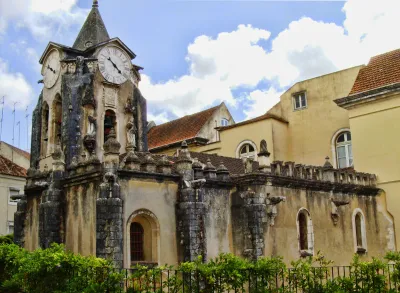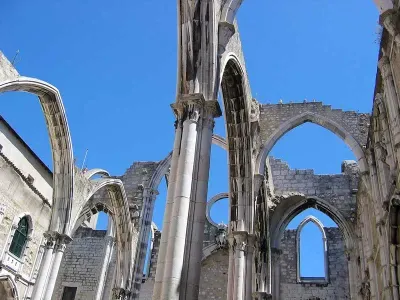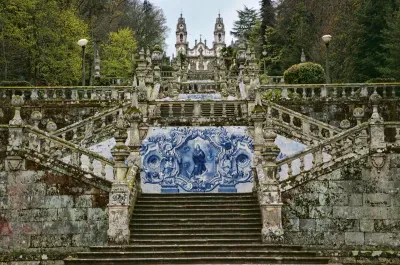Lisbon Cathedral

Reputed to be the oldest building in Lisbon, the cathedral (Sé de Lisboa) certainly has the appearance of being built to last. Compared to the frivolous Manueline architecture of the Jeronimos Monastery the Romanesque lines of the cathedral appear quite austere. Along with castellated walls and arrow slits in the towers Lisbon Cathedral, like other Portuguese cathedrals of the period, had the appearance of a fortress as much as a church.
Évora Cathedral

Évora's imposing cathedral (Sé Catedral de Évora) is situated in the very heart of the old city and the UNESCO World Heritage site. The oldest parts of the building date back to the 12th century, which was when the Moors were finally driven out by the Christians. As a consequence it is no coincidence that this mighty cathedral has certain aspects which resemble a fortress. Probably most people's first view of the cathedral is the façade which looks out over the Évora's main square.
Igreja de Nossa Senhora do Pópulo

The Igreja de Nossa Senhora do Pópulo, also referred to as the Igreja Matriz das Caldas da Rainha is a quirky little church adjoined to the thermal spa. Indeed it was built as the private chapel for the spa in 1500. The style is mainly Gothic with a notable Manueline belfry which was completed several years later.
The architect of this small church was Mateus Fernandes, who's greatest work was the Imperfect Chapels (Capelas Imperfeitas) of the Batalha Monastery.
Capela dos Ossos, Évora

The Medieval Capela dos Ossos (Chapel of Bones) in Evora is a spectacularly morbid celebration of death. As such it is one of Évora's most popular attractions.
Located within the huge, Gothic church of São Francisco, the Chapel of Bones is everything its name suggests. A vaulted ceiling supported by eight columns is about the only part of the chapel that is not covered in the human skulls and bones. It is estimated that there are over 5,000 skulls decorating the chapel many of which were dug up from the many monastic cemeteries in the area.
Igreja do Carmo, Faro

The Igreja do Carmo in Faro, with its Baroque façade and twin bell towers is one of the finest churches on the Algarve. The Carmelite church was built throughout much of the 18th and 19th centuries, starting in 1719. Disaster struck in 1755 when the great earthquake that hit Portugal badly damaged the church. However, a new facade was designed by mason Diogo Gonçalves including the now iconic bell towers.
Faro Cathedral (Sé)

Whilst much of the cathedral you see today date back to the 13th and 14th centuries this site has considerably more history. The oldest records show that there was a Roman forum built here around two thousand years ago. Following this a mosque was built here. With the Christian reconquest of Faro in 1249 the mosque was torn down and the Sé (cathedral) put up in its place. Dedicated to the Virgin Mary the cathedral is also known as the Igreja de Santa Maria de Faro.
Igreja de São Lourenço

The 17th century whitewashed church of São Lourenço de Amancil is somewhat unusual in appearance having more features than most churches of its size. To one side there is a bell tower to which a long staircase rises from the front of the building. The corners of the roof are decorated with pinnacles and adjacent to the bell tower is a copula.
Convento do Carmo

Mediaeval convent that was ruined in the great earthquake of 1755. Set overlooking the city the ruins provide a poignant reminder of the destruction wrought on Lisbon. The convent is also home to an archaeological museum with exhibits including a Peruvian mummy.
Nossa Senhora dos Remedios

Set atop a baroque staircase with 686 steps is the shrine and rococo church. To either side of the staircase is dense woodland with furtherr pathways and shrines
National Pantheon

The 17th century Church of Santa Engrácia with its huge dome was designated the National Pantheon in 1966. Within are buried many of Portugal's presidents and cultural icons